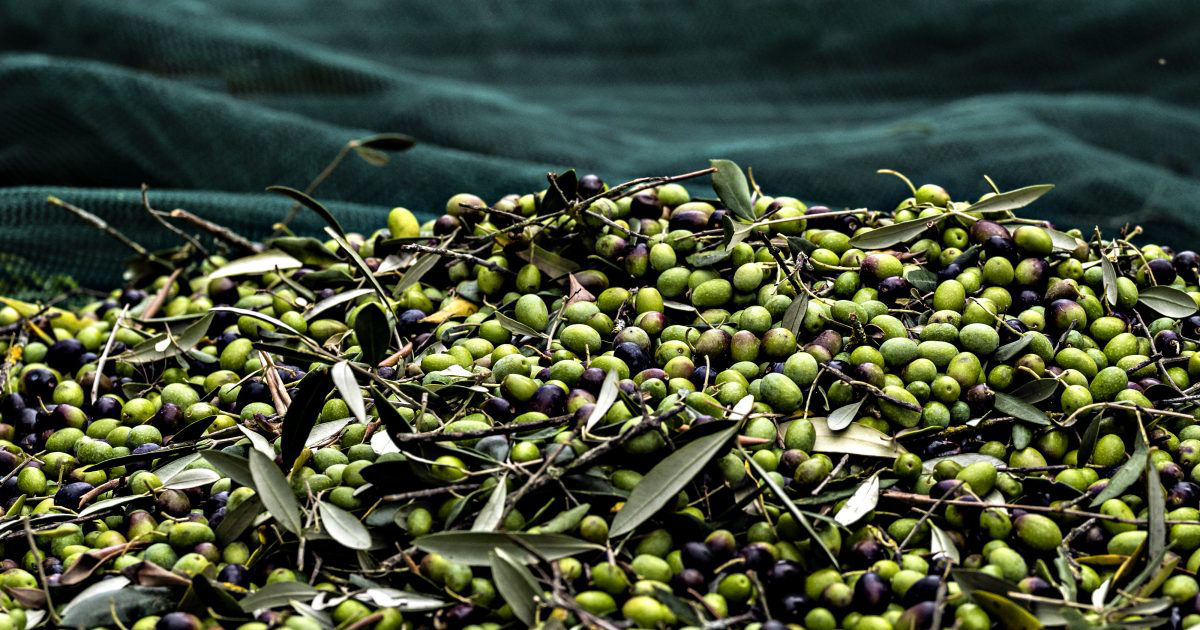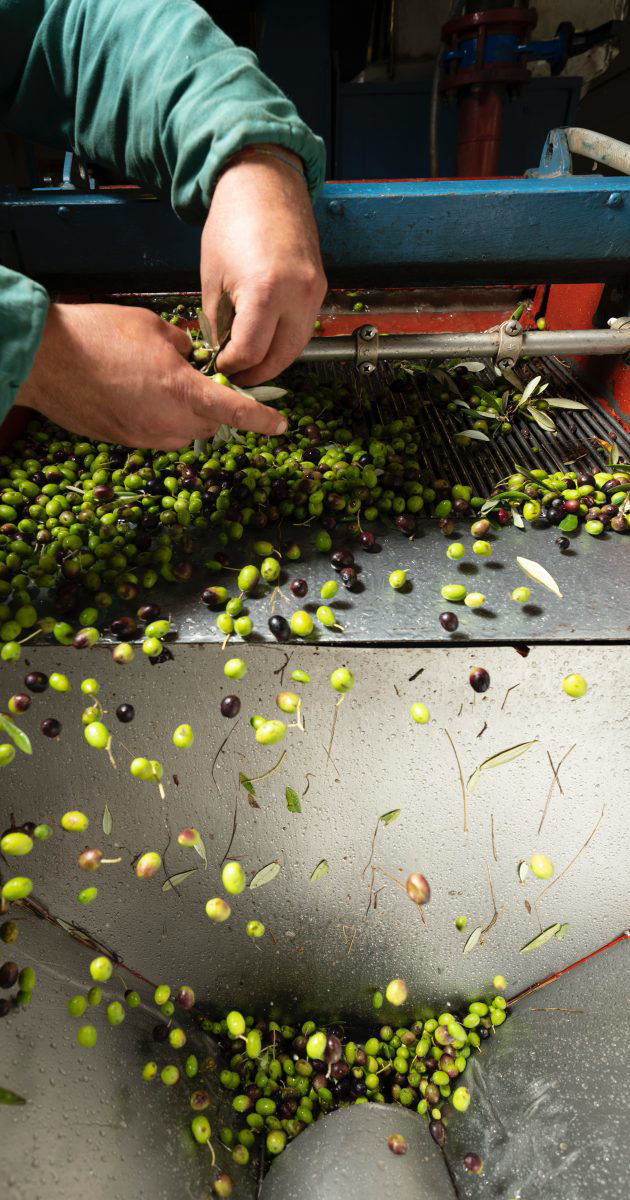
After the harvest and cleaning of the olives, it is time to start the process of extracting the oil from the fruits. This process's initial stages are called milling and crushing, two alternative methods that achieve the same result. While milling is a slower, more traditional process of oil extraction, crushing is far more modern, faster, and more mechanical. But what are the differences between these two techniques?
The olive pressing, also called milling, is one of the fundamental stages to obtain a healthy and tasty extra virgin oil. This is a procedure that allows the oil to be extracted from the olive pulp with the millstone, without using any chemical additives. The millstone is a mill consisting of a block of granite, heavy and cylindrical in shape, which rotates on a vertical axis thanks to the action of a lever arm. The olives, placed in the central cavity of the millstone, are crushed by the granite millstones, thus obtaining a coarse paste made up of pulp, skin, and pits. This traditional crushing method is used less and less, replaced by hammer or rotating disc crushers in a continuous cycle, which allows the olives to be crushed faster and obtain a more uniform paste. The milling process is said to take place "cold", i.e. without the use of water or heat, this happens in order to best preserve the organoleptic characteristics of the oil. Thanks to this technique, in fact, the aromas and flavors of oil remain unaltered, and the final product is of high quality.
On the other hand, olive crushing is a technique that involves the use of a crusher, which is a machine that grinds and crushes the olives to separate the oil from the pulp. This technique can be useful when it comes to processing large quantities of olives in a short period of time, but the result obtained may be of a lower quality level compared to the oil obtained with milling. In particular, the oil produced with crushing may be less intense and persistent in flavors and aromas.
What is milling and how is it done?
After the harvest, the preservation of olives before processing is an important aspect to ensure the quality of the product. However, it is crucial that the processing takes place as soon as possible to prevent fermentation from ruining the fruits, thereby negatively affecting the quality of the oil obtained. The fermentation of olives can cause the oil's acidity to increase, the formation of unpleasant smells, and the loss of some of the final product's organoleptic properties. For this reason, harvested olives can be stored for a short period of time, generally up to a few days, before being subjected to olive pressing.


Olive milling procedure
The milling process takes place through a series of well-defined stages, which allow for oil with excellent organoleptic characteristics to be obtained. The fundamental stages of olive processing right after the harvest includes several operations, such as:
- Defoliation of the olives to remove the leaves present;
- Washing of the olives to eliminate any impurities;
- Cold pressing, which can occur through milling or crushing;
- Removal of olive paste residues and water;
- Extraction of the oil from the paste through centrifugation;
- Separation of the oil from water and impurities through filtration;
- Distribution of the oil in appropriate bottles or containers;
- Storage of the oil in cool and dry places, protected from light and heat.
Let's now analyze in detail the most important stages up to the fruit squeezing. The first stage involves the defoliation of the olives and their washing, to eliminate any impurities present on the surface. This operation is fundamental to ensure that the final product is free of impurities and has a perfectly balanced aroma and taste. Subsequently, the olives are subjected to cold pressing, a technique that involves crushing and squeezing the olives through heavy wheels, usually made of granite. These wheels perform their work also thanks to the olive pits, which, by moving and breaking, contribute to squeezing the fruit pulp.
Differences between milling and crushing
Compared to milling, crushing is a much faster mechanical technique. The crusher replaces the granite wheels and grinds the olives to separate the oil from the pulp. This technique involves the use of water and high temperatures to facilitate and accelerate the process, which can alter the aromas and flavors of the resulting oil.
Based on business and production needs, crushing may be preferred over milling, given its speed and considering that it is generally less economically expensive. In fact, it allows large quantities of olives to be processed in a short time. However, the oil obtained with crushing may have a lower amount of polyphenols compared to the oil obtained with milling. This is due to greater exposure to air, and the use of water during the process.
The milling of olives is a delicate but essential phase to obtain a high-quality extra virgin oil. Although crushing may be a faster and less expensive technique, the oil obtained with olive pressing is considered the better choice and elegantly lends itself, with its aromas and flavors, to the preparation of any dish and recipe.
If you want to taste and feel a high-quality extra virgin oil, try the Laudemio olive oil, cold-pressed and obtained with the best olive processing techniques.